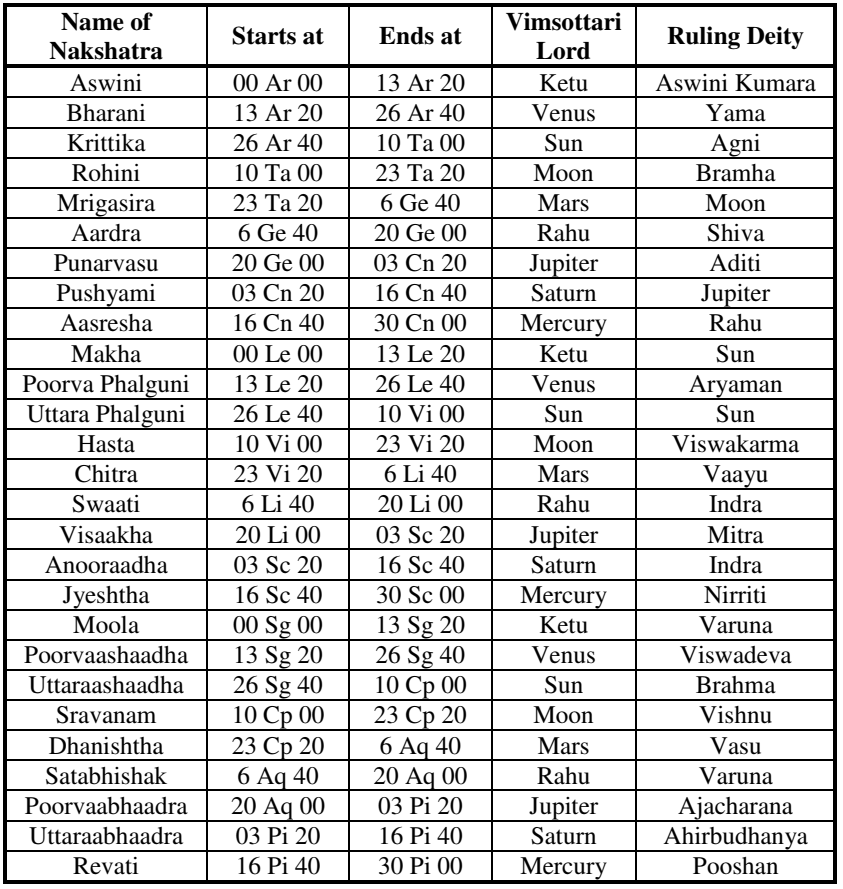Introduction to Nakshatras (constellations) in Vedic Astrology
In Vedic astrology, the zodiac is divided into 27 nakshatras. Each nakshatra has a length of 360º/27 = 13º 20′. The first nakshatra, for example, stretches from the beginning of Aries to 13º 20′ in Aries. The second nakshatra stretches from there to 26º 40′ in Aries. The third nakshatra stretches from there to 10º in Taurus. The list of nakshatras with the respective starting and ending points is given in below table. The table also gives the “Vimsottari lords” of all nakshatras. This will be used later.
Each nakshatra is again divided into 4 quarters or padas . They are called padas (legs/feet). The length of a nakshatra pada is 3º 20′. Every Rasi would, therefore, contain 9 padas or 2¼ nakshatras.

For the purpose of some special charts like Kota Chakra and Sarvatobhadra Chakra, we consider 28 nakshatras. The last quarter of Uttarashadha is known as “Abhijit”. However, we consider 27 nakshatras for all other purposes.
A segment of the zodiac extending from 276 degrees 40 m 0 s to 280'53'20“ (equivalent to 6d 40m 0s to 10d 33m 20s in the Makara rashi), involving the last quarter of the 21st (i.e. Uttarashadha) nakshatra and the beginning of the 22nd (Shravana), is sometimes considered as a separate nakshatra by the name Abhijit . This addition changes the number of nakshatras to 28. In such a situation, Abhijit is considered as the twenty-second nakshatra, and the subsequent six nakshatras (from Shravana onwards) assume changed numbers (from 23 to 28, instead of 22 to 27).